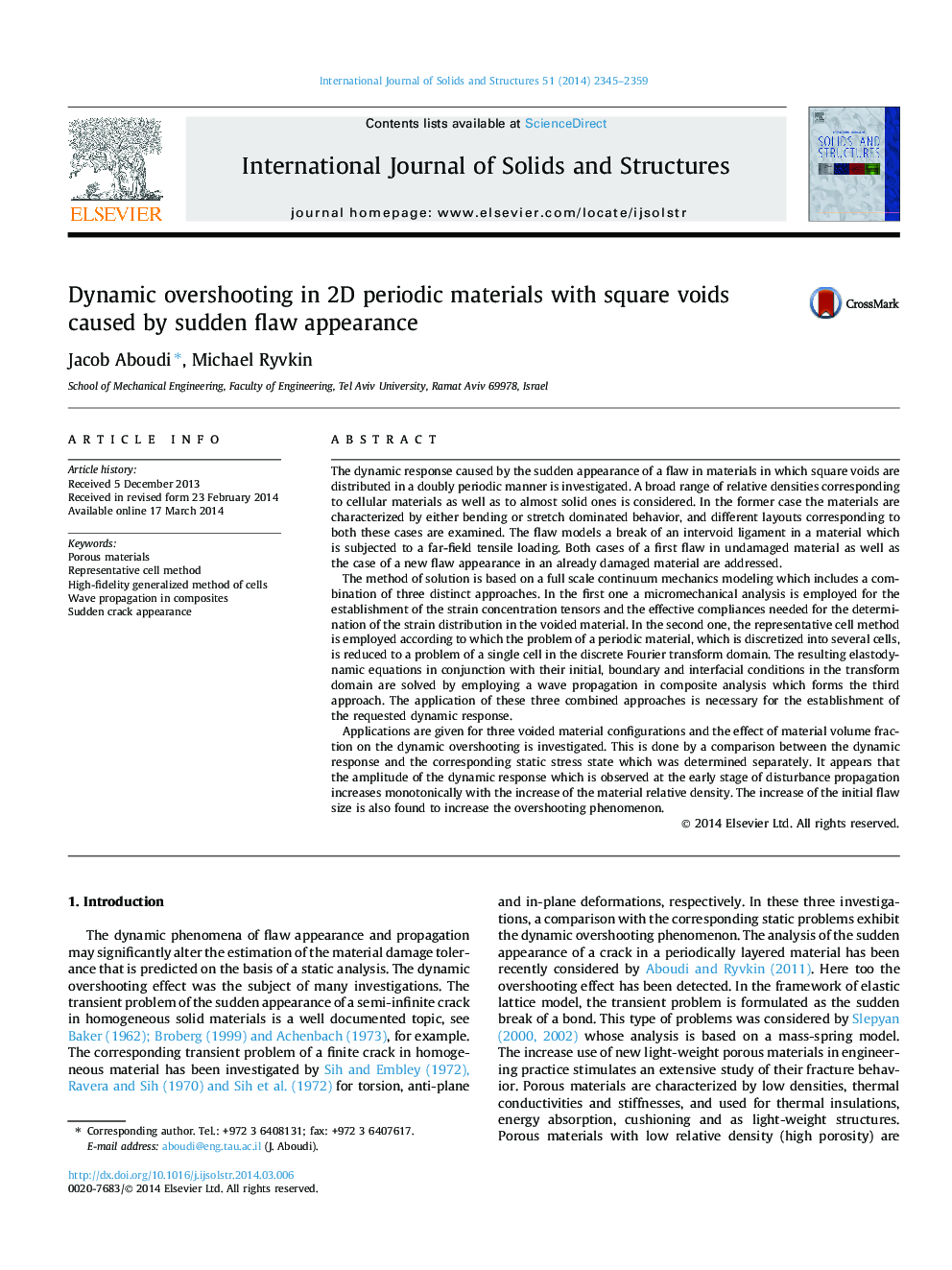| Article ID | Journal | Published Year | Pages | File Type |
|---|---|---|---|---|
| 277691 | International Journal of Solids and Structures | 2014 | 15 Pages |
The dynamic response caused by the sudden appearance of a flaw in materials in which square voids are distributed in a doubly periodic manner is investigated. A broad range of relative densities corresponding to cellular materials as well as to almost solid ones is considered. In the former case the materials are characterized by either bending or stretch dominated behavior, and different layouts corresponding to both these cases are examined. The flaw models a break of an intervoid ligament in a material which is subjected to a far-field tensile loading. Both cases of a first flaw in undamaged material as well as the case of a new flaw appearance in an already damaged material are addressed.The method of solution is based on a full scale continuum mechanics modeling which includes a combination of three distinct approaches. In the first one a micromechanical analysis is employed for the establishment of the strain concentration tensors and the effective compliances needed for the determination of the strain distribution in the voided material. In the second one, the representative cell method is employed according to which the problem of a periodic material, which is discretized into several cells, is reduced to a problem of a single cell in the discrete Fourier transform domain. The resulting elastodynamic equations in conjunction with their initial, boundary and interfacial conditions in the transform domain are solved by employing a wave propagation in composite analysis which forms the third approach. The application of these three combined approaches is necessary for the establishment of the requested dynamic response.Applications are given for three voided material configurations and the effect of material volume fraction on the dynamic overshooting is investigated. This is done by a comparison between the dynamic response and the corresponding static stress state which was determined separately. It appears that the amplitude of the dynamic response which is observed at the early stage of disturbance propagation increases monotonically with the increase of the material relative density. The increase of the initial flaw size is also found to increase the overshooting phenomenon.
